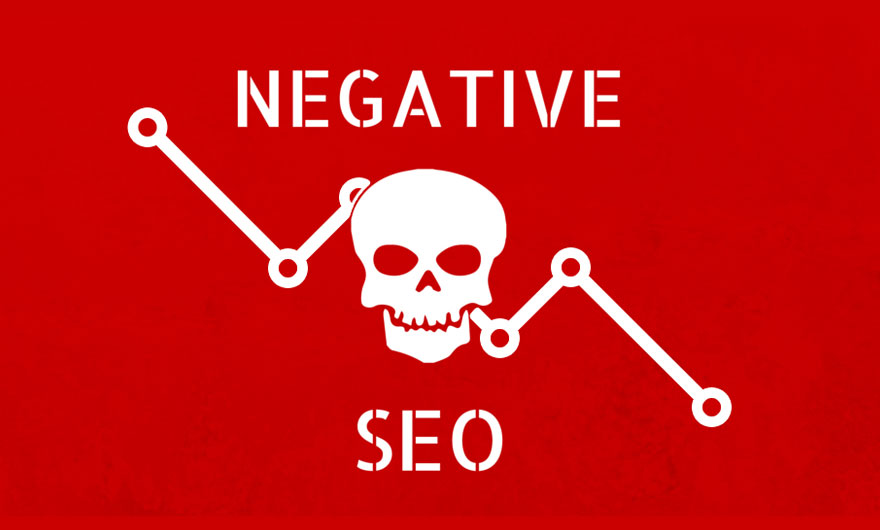Negative SEO, Using illegal methods and black hat SEO will result in fines and lower your site ranking. If using these methods is so dangerous and harmful, can using them for other sites change their position in search results?
Sometimes your competitors’ sites decide to attack you instead of improving your site. In other words, these sites use black hat techniques instead of improving the user experience and generating valuable content for their site, but not to increase their site ranking, but because your site Get rid of Google!
It is interesting to know that this thinking is not new in the competitive environment of the Internet and even a name has been chosen for it; Negative SEO!
What is Negative SEO?
Negative SEO includes techniques and methods that are somewhat similar to black hat SEO techniques and have a negative effect on your site ranking and reduce it.
Is Negative SEO Really a Threat?
Do not doubt. There is indeed negative SEO and there are thousands of websites that have been subconsciously affected by this issue and some of them have even been forced to close their site. So this is a serious threat and you should try not to fall into its trap.
In order to have a good strategy to deal with negative SEO, we must first know the most common techniques used to do so. In fact, it is only by knowing the various methods of negative SEO that we can insure our site against the sudden attack of rival sites. Now it’s time to get acquainted with the types of negative SEO:
1- Malicious link building for a rival site
In this technique, the attacker does not have access to your site or the content of your pages, so he concentrates all his activities on malicious link building for your site. Access to host information or site management panel is a difficult task and in fact requires overcoming the security barrier of the target site, so it can be said that external negative SEO has received more attention than internal SEO.
Google Penguin algorithm has the task of checking the health status of link building sites and if it is sure that the backlinks were purchased with the aim of gaining a place in Google results, it will fine the wrong site. This simple point is enough to make people think that by building malicious links for their competitors, they will be targeted by this algorithm.
External negative SEO is actually creating very few and low value external links for a competitor site.
Penguin algorithm to check the health of linking a site; Pays attention to the number, credibility, text of the link and the time period of creating the links. People who use these techniques usually consider the following points in link building:
- Links are generally from sites and blogs with low domain credentials and high spam scores.
- A large number of links are created in a short period of time for the main page of your site or pages that have a good visit and position.
- The same terms as Anchor Text are used for link building, which are exactly the keywords of your site.
- The sites that link to you have nothing to do with your site in terms of subject matter and concept.
- The links that are given to your site are all followers.
These activities will result in a short period of time, creating a lot of low quality links and of course targeted on a specific phrase for your site. As a result, your site will lose its credibility with Google and will experience a sharp drop in ranking.
Methods to prevent and deal with malicious link building
Imagine that the credibility of your site is a cup of tea and the external links are the sugar dissolved in it! Now a competing site is using malicious link building to try to increase the amount of sugar in it, and this will make your tea too sweet. Excessive sweetness causes the penguin algorithm to suspect or even penalize your site.
2- Hacking the site and changing the content of the pages
Internal negative SEO techniques are far more complex and difficult than external methods. Because to do that, direct access to the admin panel or site host will be required. In fact, negative internal SEO techniques are applicable when your site has been hacked by a hostile person.
Hacking sites in the past had no purpose other than to show off or show off their power, and usually resulted in a black page with the hacker name and profile, which was quickly fixed by the site administrator.
Once your site has been hacked, the intruder will have two options. In the first method, using the resources and credibility of your site, it creates new pages or edits your content in such a way as to create links for your site.
The second method has no purpose other than to destroy your site, and will usually involve activities such as the following:
- Production of low value and low quality pages with a large number
- Link building for malicious and obscene sites from your pages
- Restrict Google bots from accessing important pages of the site using the noindex tag or the robots.txt file
- Display different content to Google bots and original content to users
- DDOS attacks on the server aimed at making the site inaccessible to users
- Enable malicious scripts and code on pages to extract digital currencies
- And …
All of the above can reduce the value and credibility of your site with Google and cause it to lose its position in important keywords.

Methods to deal with site hacking and production of malicious content
To avoid this method in negative SEO, the most important thing you should do is maintain the security of the site. Websites are vulnerable from three different layers of security; User information, coding security holes, server security holes.
1- User side security
It is interesting to know that the most common method of hacking for Internet sites is a weak site administrator password! Yes, many of us think that by setting a simple password we will increase our speed and efficiency in entering the admin panel, unaware that this simple mistake can have irreparable consequences for you.
Sites managed by multiple people will usually have less oversight because the person you choose to manage your orders may not have enough information about the security of a site and the consequences of not following it. So the first step is to choose the right password and of course hide the login pages for others.
2- Security in site coding
The next step is to follow the security tips when coding the site. For example, there may be space in a part of your site for users to send files. If you do not check and delete the submitted files before sending them to the server, malicious codes may be sent to your server and access to its information for Infiltrator possible.
If you use content management systems such as WordPress, you should regularly update your core and plugins and increase its security level by using valid security plugins such as IT Security.
3- Server or host security
The next step is to protect the server from possible attacks. If your server does not have the necessary tools to prevent these attacks, it can easily occupy the CPU and RAM resources by sending many visits or requests and block users’ access to the site.
If you do not have enough knowledge to maintain server security or use shared hosting, there are peripherals like Cloud flare that can do this for you.
Solution for WordPress site
If you use WordPress CMS, install the Google Authenticator plugin and create a two-step password. This way, every time you try to log in to your website, you will be asked to enter the code generated by this plugin on your mobile phone.
It is also highly recommended that you choose a password consisting of numbers and special characters, back up your files and database regularly, and contact your hosting company if your website allows users to upload files. Ask them how you can install an antivirus to prevent malware from infiltrating.
Google will notice the hack before you know it!
If you have registered your site in the Google Search Console tool, Google bots will constantly monitor your site and pages. Any sudden change in the content of the pages or the creation of low-value pages on it will be quickly detected by these bots and will be notified to you through the Security Issues section.
3- Destroying the brand and publishing critical content on the Internet
When you become a reputable and powerful brand, you will probably take your site security tips very seriously and have valuable and credible link building on the internet. In this situation, using the previous two techniques will be practically impossible, and your enemies will try to destroy your brand personality and identity.
Internet users are accustomed to researching a company or product before choosing it, and when searching for your name they see many pages of negative experience from previous customers or critical comments, they will hesitate to make a decision.
Some of the most common negative SEO activities in the field of brand destruction are:
- Remove your company from Google Maps or insert negative comments in this space
- Publish critical articles and negative experiences in forums and free blogging service
- Publish specialized and analytical articles to review and compare your services with competitors in a one-sided and targeted manner
- Report your site pages through Google Anti-Spam Form
- Post negative comments on your site’s products or services page
Gaining customers’ trust is very difficult and every small mistake can change their view of the quality of your services and products. As a result of these methods, all your efforts to turn a user into a customer are lost in an instant.
How to prevent the destruction of our brand on the Internet?
The answer to this question is a bit difficult, the important point is that this method is usually used for brands that are known and reputable but do not have a direct and strong relationship with their audience. In fact, these techniques are effective when you yourself have not paid attention to customer satisfaction.
If brand activity on social media is appropriate and consistent, criticism and questions are answered quickly, online public relations is continuously and purposefully planned; No one can destroy your brand using negative SEO techniques, and even if such activities are done far from reality, your loyal customers will probably respond.
Therefore, the best solutions to avoid these techniques are:
- Regular internet monitoring to measure user satisfaction with your products and services.
- Targeted activity on social networks and continuous communication with the audience.
- Publish news and information related to your business on specialized sites and news agencies.
- Report malicious pages and baseless comments to webmasters and Google.
What is the chance of success in using negative SEO?
Over the years, Google’s anti-spam team has always emphasized that negative SEO and related techniques have no effect on search engine rankings. Reducing the impact of backlinks, identifying malicious sites, and making the Disavow Tool and Spam Report available show that Google is determined to combat negative SEO.
Of course, this does not mean that we neglect to check the status of our site and its external links. As an SEO expert you are always on the lookout for page index, loading speed, download links, and more; As a result, any sudden or unforeseen change in the ranking and traffic statistics of the site can be a wake-up call to check the possibility of Google and SEO negative penalties.
The more emphasis you place on producing valuable content and user satisfaction, the more credible your brand will be with Google and the public, and the more credible your brand will be, the less likely these techniques will be to your site.
In fact, negative SEO usually targets our weaknesses. These attacks, apart from the possible consequences (which can be remedied), will help you to strive for the growth and promotion of your brand.







Leave feedback about this
You must be logged in to post a comment.